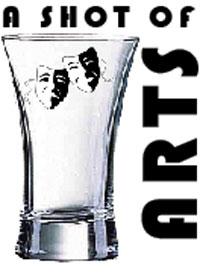Controversy at the HAG
March 12, 2008
Those expecting to walk into the Harbor Art Gallery this month and see the Love Art Lab exhibit by the world renowned Annie Sprinkle are in for a surprise, as the university has decided not to bring the revolutionary and controversial artist to Harbor point.
Annie Sprinkle (pictured at right) is not only controversial because of her past as a prostitute and porn star, although that was more than twenty years ago, but because of the sexual nature of her work. Sprinkle’s Love Art Lab, a five-year project begun in 2005, features a number of exhibits, performances and installations exploring a myriad of issues dealing with sexuality, intimacy and cultural attitudes towards sex and nudity. According to the artist’s website, “The Love Art Laboratory grew out of our response to the violence of war, the anti-gay marriage movement, and our prevailing culture of cynicism. We hope the Love Art Laboratory will help make the world a more fun, sexy, tolerant, love-filled place.” Many of the exhibits and performances in the Love Art Lab contain graphic imagery, such as the exhibit planned for UMass, Breast Cancer Ballet.
The exhibit came about when Sprinkle was diagnosed with breast cancer in 2005 and she and her partner, Elizabeth Stephens, decided to overcome the tragedy by utilizing their love for each other and their expressive art. Together, the couple put together a series of photos from Annie’s ordeal and created an exhibit out of the materials. The artists “juxtaposed old pin-up photos of Annie with the new topless scans, MRI images and other ephemera to create a series of collages.” Photos from the exhibit can be seen at http://www.loveartlab.org/slideshow.php?year_id=2&cat_id=51.
Late last semester, when the opportunity to bring Sprinkle to campus came up, student gallery director Andrea Souza brought a funding proposal to Student Life in order to fund the exhibit, but was asked to make a formal proposal justifying it. “Somewhere along the line of putting the show through, we went to Student Life for funding, and it got halted and we had to ask permission,” recalled Souza. This by itself was somewhat of a surprise, because, as Souza pointed out, the gallery is student-run, self-sufficient and usually left to its own devices when it comes to these kinds of decisions. “We solicit our own artists, put together shows, run the whole thing. We never have had to ask permission to bring someone to campus before,” said Souza.
Souza, who garnered support from faculty and staff across the campus, wrote up and presented a two-page report to a committee of Student Life staffers meant to alleviate concerns. As of time of press she has yet to receive a response, but it is already too late to rebook Sprinkle. “My main complaint was, here we are, putting our name on the map, and we have a potential blockbuster of an artist here, and he kind of halted it without any real explanation,” a frustrated Souza lamented.
Vice Chancellor for Student Affairs Patrick Day explained what went into the decision and explained the administrative take on the situation. “The first way to go about this would have been to look at this kind of thing and think, ‘Oh well, it’s got content, it’s about who Annie Sprinkle is, was.’ The way I look at various kinds of decision like this is as a matter of largely strategy and timing. In the same way that when we sit down as a staff and talk about what programs to do when and where, we ask the same kind of questions: Is this the right time for this? Is this the right place for this? All of those kinds of things. It really wasn’t that different from those kinds of decisions. The gallery director, Andrea, who has done an exceptional job, made a very good presentation that was very thorough; she had really done the homework and provided a lot of substantive information which was very helpful.”
Day explains that while he is not afraid of controversy, the larger issue is that what the gallery is and what it does have really yet to be defined. “For me the question is, what have we determined our gallery to be about?” Day explained. “And when I mean ‘we,’ I mean the Student Senate, the university administration and the campus community; when have we had the conversation about who we want to come into the gallery, when we want them to come into the gallery and what we’re trying to achieve with the gallery.”
Day went on to explain that once these discussion have been had, it will be easier to make decisions about the gallery and what kind of content they will feature. One major concern is that with no defined criteria for what will go in the gallery, should someone complain about content, the administration has nowhere to point the complainant as a means of explanation. Lacking such a policy or document makes most such decisions completely subjective and much harder to justify and defend.
The Vice Chancellor was also very clear on the point that the gallery is not being censored, it is just undefined for the moment, and that artists such as Sprinkle will be more than welcome if that is the direction that the community as a whole eventually decides the gallery will go.
Until then, for better or worse, the Harbor Art Gallery will remain controversy-free. Let’s hope the student body has a strong taste for vanilla, because that is the only art flavor available on campus for the near future.





















































